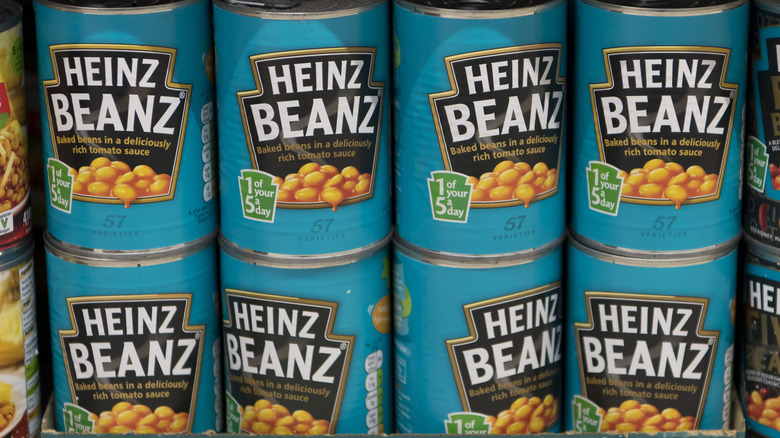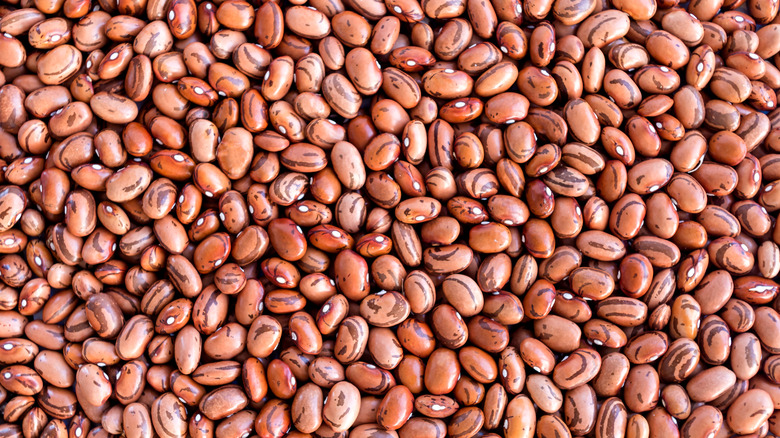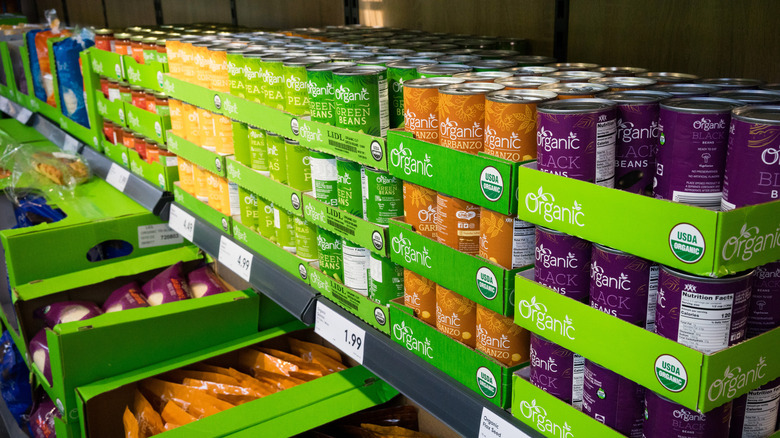How Are Canned Beans Actually Made?
In the tune "Heinz Baked Beans," Roger Daltrey of the classic rock band The Who sings, "What's for tea, Mum? What's for tea, darling? Darling, I said, 'what's for tea? What's for tea, daughter? Heinz baked beans."
That's it. Those are the lyrics of the entire song. And we get it. Canned beans are something to sing about. There's a reason baked beans are a longstanding tea-time staple in England. And don't even get us started on beans on toast.
But they aren't just for tea time: Beans were a staple in the hippie diet of the 1970s. For a while, after college, The Doors frontman Jim Morrison famously lived on a friend's roof and ate only canned beans.
Their versatility and low cost — according to the Bean Institute, canned pinto beans cost roughly $0.34 per serving – have made canned beans a perennial favorite. Black beans, in particular, have become a staple of plant-based diets in recent years, showing up in veggie burgers and even brownies.
It seems almost too good to be true, then, that something so small as a bean can pack such a healthful punch. On average, a single cup of beans contains 15 grams of protein and 19 grams of fiber, per WebMD. They can also reduce the risk of heart disease and type 2 diabetes, improve metabolism, and aid in neurological functions, per Healthline.
So, how are beans canned to maintain the nutritional value that makes them such a superfood?
Quality inspection and blanching
Beans are harvested and shipped to processing plants to be canned. According to Dr. Clifford Hall – professor of food sciences and a member of the Bean Institute — America is, by far, the world leader in bean production. Each year, U.S. farmers plant between 1.5 million and 1.8 million acres of beans.
Upon their arrival at processing plants, the beans are inspected for color by an optical sorter machine, which uses an electronic eye to assess the quality of each bean, per the Tesco Eat Happy Project. It's no small task. On average, a processing factory can see deliveries of 160 tons of beans daily, per Tesco.
Beans that pass quality inspection are then rehydrated via blanching in hot water, between 167 degrees and 185 degrees Fahrenheit. In an ABC Science documentary, Clare Collins, a professor and dietician, explores Australia's biggest fruit and vegetable cannery and (literally) walks viewers through the bean canning process.
Time and temperature, she says, are key to killing microbes and preserving the beans' inherent nutrition. This sweet spot, in which the microbes are neutralized yet the nutrients are maintained, is referred to as the "thermal death time," she explains.
Cooking and canning
From there, blanched beans are distributed into cans via a high-speed conveyor belt system, per the ABC Science documentary. In the Australian cannery, the belt shoots out 400 cans per minute. This is where any additives to the canning liquid are added.
The canned beans are then placed inside a massive dry pressure cooker. They must cook at over 248 degrees Fahrenheit to taste great and be safe for preservation, says professor and dietician Clare Collins.
After cooking, the beans are carefully removed from the heat to cool; this prevents them from changing color or overcooking, via the Eat Happy Project. From there, the cans are labeled, packed, and shipped to grocery stores around the world. With proper canning processes, canned beans should last two to five years, per Food Network.
So, after all this processing, are canned beans as healthy as dry beans rehydrated at home? The answer is: pretty much.
Blanching strips beans of some of their natural water-soluble nutrients, Collins says, but the beans are cooked in the can, which means many of their other nutrients are retained in the canning liquid.
Canned beans sometimes get a bad rap for the high sodium content in their canning liquid, but, luckily, there's an easy fix: Reduce the sodium levels by rinsing canned beans before using.


